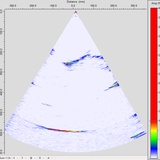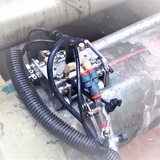The Phased Array (PA) technique is an extension of the classical method of ultrasonic echo, which is used for testing of welds, castings or forgings.
The PA probe comprises of many small ultrasonic transducers in a row, from each of which can be controlled independently. By changing, for example, the awaken time of the transducers to send ultrasonic waves one by one, the angle of the resultant ultrasonic beam can be set. In other words, the ultrasonic beam can be electronically controlled. The beam sweeps the object under test (weld, forging) like a beam of light flashes the room. Many such ultrasonic beams are composed into a complete image which allows "slicing" of the examined object.
Using modern ultrasonic flow detectors enables the use of a single beam PA probe in many applications such as:
1. Creation of corrosion maps
2. Examination using multiple angles of ultrasound beam insertion with examination recording.
3. Modern data analysis tools make possible presenting the results in a variety of ways, including longitudinal, transverse and lateral projections.

Application
The Phased Array technique provides the possibility of saving the whole test and more possibilities of detecting defects in: welded joints, forgings, castings, metallurgical materials than traditional UT.

Important to know
The PA technique uses the reflection phenomenon used also in classical ultrasonic testing and that together with proper examination plan allows applying the existing acceptance criteria in accordance with PN-EN ISO 11666 in terms of the quality of the welded joints described in PN-EN ISO 5817.
